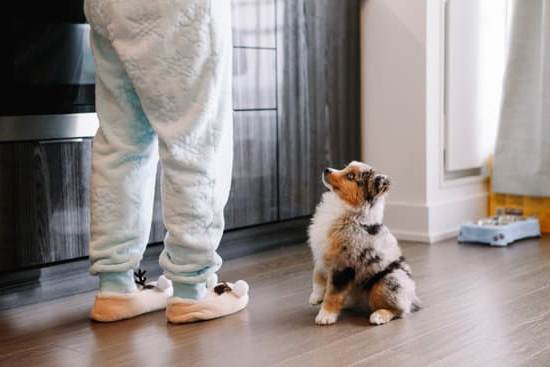Are you looking to improve your skills as a dog trainer? Learning how to be a better dog trainer is crucial for effectively working with our furry companions. Whether you are a seasoned professional or just starting out, understanding the ins and outs of dog training can make a significant difference in the results you achieve.
To become a better dog trainer, it is essential to grasp the importance of proper training techniques and strategies. This entails not only teaching basic commands but also addressing behavior issues, building trust, and strengthening the bond between you and your four-legged friend. By mastering the art of dog training, you can create a harmonious relationship based on mutual respect and understanding.
One key aspect of enhancing your skills as a dog trainer is comprehending canine behavior and psychology. Dogs have their own unique ways of communicating and interpreting the world around them. By delving into their perspective, you can tailor your training methods to suit their individual needs, ultimately leading to more successful outcomes in your training sessions. Remember, every dog is different, so being attuned to their behaviors and instincts is vital in becoming an effective trainer.
Understanding Canine Behavior and Psychology
Learning to Think Like a Dog
Understanding canine behavior and psychology is crucial in becoming a better dog trainer. Dogs communicate through body language, vocalizations, and behavior, which can often be misunderstood by humans. To bridge this communication gap, it’s essential to learn how to think like a dog. By observing your furry friend’s actions and reactions in various situations, you can gain valuable insights into their thought processes and motivations.
One way to enhance your understanding of canine behavior is by studying dog body language cues. Tail wagging, ear position, eye contact, and overall posture are all indicators of a dog’s emotional state. For example, a wagging tail doesn’t always mean a happy dog – it could signify excitement or even fear. By interpreting these signals correctly, you can tailor your training approach to meet your dog’s needs effectively.
Applying Behavioral Psychology Principles
Behavioral psychology principles play a significant role in shaping a dog’s actions and reactions. Dogs respond well to positive reinforcement techniques such as praise, treats, or toys when they exhibit desirable behaviors. Through operant conditioning, dogs learn to associate specific actions with positive consequences, making them more likely to repeat those behaviors in the future. Understanding these principles and applying them consistently will help you become a more effective dog trainer.
Moreover, learning about classical conditioning can help you modify unwanted behaviors in dogs by changing their emotional responses to certain stimuli. By pairing negative experiences with positive outcomes gradually, you can help your canine companion overcome fears or anxieties. Being familiar with these psychological concepts enables you to create structured training plans that cater to your dog’s individual needs while fostering a strong bond based on trust and mutual respect.
Seeking Professional Guidance
While self-education plays a pivotal role in understanding canine behavior and psychology for effective training methods, seeking professional guidance can further enhance your skills as a dog trainer. Enrolling in courses or workshops conducted by certified trainers or animal behaviorists can provide valuable insights into advanced training techniques tailored to specific behavioral issues or training goals.
By learning from experienced professionals who specialize in canine behavior modification and training methods, you can refine your abilities and develop strategies that address complex training challenges effectively.
To continually improve as a dog trainer, embrace opportunities for ongoing education through workshops, seminars, or certifications focused on the latest developments in animal psychology and training methodologies. Remember that learning is an ongoing process – staying informed about new approaches and techniques will empower you to adapt your training methods according to evolving scientific knowledge about how dogs learn best.
Setting Realistic Training Goals
To set realistic training goals, start by assessing your dog’s current skill level and behaviors. Understand what areas need improvement and create a plan to address those specific needs. Break down larger objectives into smaller, manageable tasks that can be easily accomplished within a reasonable timeframe. This way, both you and your dog can experience success throughout the training process.
One key aspect of setting realistic training goals is being flexible and adaptable. Not all dogs learn at the same pace, so it’s important to adjust your expectations based on your individual dog’s progress. Celebrate small victories along the way and stay patient when faced with setbacks. By setting achievable milestones and staying committed to your training regimen, you can effectively reach your ultimate goal of becoming a better dog trainer.
| Aspect | Importance |
|---|---|
| Assessing Dog’s Skills | Understand where the starting point is |
| Breaking Down Objectives | Make large goals more achievable |
| Celebrating Small Victories | Motivate both trainer and dog along the way |
Building a Strong Bond With Your Dog
One way to build a strong bond with your dog is through spending quality time together. Whether it’s going for walks, playing games, or simply cuddling on the couch, bonding activities help strengthen your relationship. By engaging in these activities regularly, you can create a sense of closeness and companionship with your dog that will enhance your training efforts.
Another important aspect of building a strong bond with your dog is to show them love and affection consistently. Positive interactions and praise are key components in strengthening the bond between you and your furry friend. Dogs respond well to positive reinforcement, so make sure to reward good behavior with treats, praise, or even just a belly rub. By showing your dog love and appreciation, you not only reinforce their good behavior but also deepen the connection between you both.
In order to be a better dog trainer, it is essential to prioritize building a strong bond with your canine companion. A solid foundation built on trust, communication, and mutual respect will not only improve training outcomes but also lead to a happier and healthier relationship overall. By investing time and effort into strengthening the bond with your dog, you set yourself up for success in all aspects of training and beyond.
Positive Reinforcement Training Techniques
When it comes to dog training, positive reinforcement techniques have been proven to be highly effective in shaping desired behaviors in dogs. This method involves rewarding your dog for exhibiting good behavior, which encourages them to repeat that behavior in the future. Rewards can range from treats and praise to toys and playtime. By using positive reinforcement, you are not only teaching your dog commands but also building a strong bond based on trust and rewards.
One key aspect of positive reinforcement training is timing. It is essential to reward your dog immediately after they exhibit the desired behavior so they can make a connection between the action and the reward. For example, if you are teaching your dog to sit, offer a treat as soon as their bottom touches the ground. This instant gratification helps reinforce the behavior and makes it more likely for your dog to comply in the future.
Consistency is another crucial factor in using positive reinforcement effectively. Make sure to reward your dog every time they perform the desired behavior, especially during the initial stages of training. Additionally, be consistent in your commands and expectations to avoid confusing your furry friend. By creating a clear and predictable environment, you can help your dog understand what is expected of them and accelerate their learning process.
| Key Points | Details |
|---|---|
| Timing | Reward immediately after desired behavior |
| Consistency | Reward consistently for each desired behavior |
Consistency and Patience in Training
Consistency and patience are key components in becoming a better dog trainer. Dogs thrive on routine and repetition, so maintaining consistency in your training methods and expectations is crucial for their understanding and progress. By setting clear rules and boundaries that are consistently reinforced, you can help your dog learn what behaviors are acceptable and which ones are not. This helps create a structured environment where your dog knows what to expect, leading to better training outcomes.
To practice consistency in dog training, consider the following tips:
- Establish a regular schedule for training sessions, meals, walks, and playtime to create predictability for your dog.
- Use the same cues and commands consistently to avoid confusion and reinforce learning.
- Reward good behavior consistently with treats, praise, or playtime to encourage desired actions.
Patience is equally important when it comes to training your dog effectively. Remember that every dog learns at their own pace, so it’s essential to remain patient and avoid getting frustrated during training sessions. Rushing the process or expecting immediate results can lead to setbacks in your training efforts. By practicing patience with your furry companion, you can help build trust and strengthen your bond while working towards your training goals.
When practicing patience in dog training, keep these strategies in mind:
- Acknowledge small improvements and successes while being patient with setbacks or challenges.
- Stay calm and composed during training sessions, even when facing difficulties or resistance from your dog.
- Take breaks when needed to prevent burnout for both you and your dog, allowing time to regroup before returning to training tasks.
By incorporating consistency and patience into your approach as a dog trainer, you can create a positive learning experience for your canine companion while fostering a strong bond based on trust and mutual understanding. Remember that every interaction with your dog is an opportunity for growth and improvement in both their behavior and your skills as a trainer.
Embrace these qualities in your training journey, keeping in mind that dedication and mindfulness are essential elements of how to be a better dog trainer.
The Role of Communication in Dog Training
Communication plays a crucial role in effective dog training. Dogs rely heavily on communication cues to understand what is expected of them, and as a trainer, it is important to convey clear and consistent messages to your furry companion. One of the key aspects of communication in dog training is using verbal commands and cues that are easy for your dog to understand. Keep commands simple, consistent, and use a calm and assertive tone to convey your expectations.
In addition to verbal cues, body language also plays a significant role in communicating with your dog during training sessions. Dogs are highly observant of human body language, so it is essential to be aware of your own gestures, posture, and overall demeanor when working with your dog. Positive reinforcement techniques such as using treats or toys can help reinforce good behavior, but it is equally important to pair these rewards with clear verbal commands and consistent body language cues.
Another important aspect of communication in dog training is timing. Dogs have a short attention span, so it is crucial to communicate with them promptly when they exhibit the desired behavior or need correction.
By praising or redirecting their behavior in a timely manner, you can effectively reinforce their understanding of what is expected of them. Mastering the art of clear, consistent communication with your canine companion will not only enhance the training experience but also strengthen the bond between you and your furry friend.
By focusing on improving your communication skills as a trainer, you can create a positive learning environment for your dog that fosters trust and cooperation. Understanding how to effectively communicate through verbal commands, body language, and timely feedback can significantly impact the success of your training sessions. Ultimately, establishing clear lines of communication with your dog will pave the way for a harmonious relationship built on mutual understanding and respect.
Addressing Common Training Challenges
Dog training can be a rewarding experience, but it is not without its challenges. As a dog trainer, you may encounter various obstacles along the way that can hinder your progress. However, with patience and perseverance, you can overcome these challenges and continue to grow as a better dog trainer.
Below are some common training challenges that you may face and how to address them effectively:
- Handling leash pulling: Many dogs have a natural tendency to pull on the leash when going for walks. To address this behavior, consistency is key. Teach your dog to walk politely on a loose leash by stopping every time they pull and only moving forward when there is no tension on the leash.
- Dealing with distractions: Dogs can easily get distracted by their surroundings, especially during training sessions. To help your dog focus, start training in a quiet environment before gradually introducing distractions. Use high-value treats or toys to keep your dog engaged and reward good behavior consistently.
- Overcoming fear or aggression: Some dogs may exhibit fear or aggression towards certain triggers, such as other dogs or loud noises. It’s important to address these issues with care and seek professional help if needed. Gradually desensitize your dog to triggers while providing positive reinforcement to create positive associations.
By taking a proactive approach to addressing common training challenges, you can improve your skills as a dog trainer and create a strong bond with your furry companion. Remember that every dog is unique, so it’s essential to tailor your training methods to suit their individual needs and personalities. With consistency, patience, and positive reinforcement techniques, you can become a more effective and successful dog trainer.
- Handling leash pulling
- Dealing with distractions
- Overcoming fear or aggression
Continuing Education and Training Updates
Staying Updated on Training Techniques
As a dog trainer, it is crucial to stay informed about the latest training techniques and methods. The world of dog training is constantly evolving, with new research and studies being conducted regularly.
By staying updated on these developments, you can ensure that you are providing the most effective and up-to-date training for your canine clients. Attend workshops, seminars, and conferences, read books and articles by leading experts in the field, and engage with other trainers to exchange ideas and best practices.
Professional Development Opportunities
Continuing education is not only about staying informed on training techniques but also about honing your skills as a dog trainer. Consider pursuing certifications or further education in areas such as behavioral modification, obedience training, or specialized training for service dogs or therapy dogs. These additional qualifications can help you stand out in a competitive market and attract more clients who are looking for a highly skilled and knowledgeable trainer.
Networking and Collaboration With Other Professionals
Networking with other professionals in the pet industry can provide valuable opportunities for learning and growth as a dog trainer. Collaborating with veterinarians, animal behaviorists, groomers, and other trainers can expose you to different perspectives and approaches to dog training.
By building relationships with other professionals, you can create a network of support that can help you tackle challenging cases or seek advice on complex training issues. Remember, learning from others in the field is a key component of how to be a better dog trainer.
Conclusion
In conclusion, becoming a successful dog trainer requires a combination of knowledge, patience, and dedication. Understanding the importance of proper dog training is essential in creating a harmonious relationship with your furry companion. By delving into canine behavior and psychology, you can tailor your training methods to best suit your dog’s needs and learning style. Setting realistic training goals is crucial in making progress and seeing improvement in your dog’s behavior.
Building a strong bond with your dog is key to successful training outcomes. Positive reinforcement techniques not only encourage desired behaviors but also strengthen the bond between you and your pet. Consistency and patience are vital elements in training, as dogs thrive on routine and repetition. By remaining calm and consistent in your approach, you can effectively communicate with your dog and achieve lasting results.
Continuing education and staying updated on the latest training techniques are essential for growth as a dog trainer. As you encounter common challenges in training, such as stubbornness or distraction, it’s important to adapt and learn new strategies to overcome them. By following these guidelines on how to be a better dog trainer, you can cultivate a rewarding relationship with your canine companion while helping them reach their full potential.
Frequently Asked Questions
How Can I Improve My Dog’s Training?
Consistency is key when it comes to improving your dog’s training. Making sure to use the same commands and rewards each time will help reinforce good behavior. Patience and positive reinforcement are also crucial in creating a successful training routine for your furry friend.
What Are the Strengths of a Dog Trainer?
One of the strengths of a dog trainer is their ability to understand canine behavior and psychology. A skilled trainer can effectively communicate with dogs, identify issues or obstacles in training, and develop customized solutions based on each dog’s unique needs. Their patience and dedication are also valuable traits that contribute to successful training outcomes.
What Is the Number One Rule in Dog Training?
The number one rule in dog training is to be patient and consistent. Dogs thrive on routine and clear communication, so it’s important to stick to a steady training schedule and use the same commands consistently.
Rushing the training process or becoming frustrated can hinder progress, so staying patient and positive is essential for both you and your furry companion.

Welcome to the blog! I am a professional dog trainer and have been working with dogs for many years. In this blog, I will be discussing various topics related to dog training, including tips, tricks, and advice. I hope you find this information helpful and informative. Thanks for reading!





